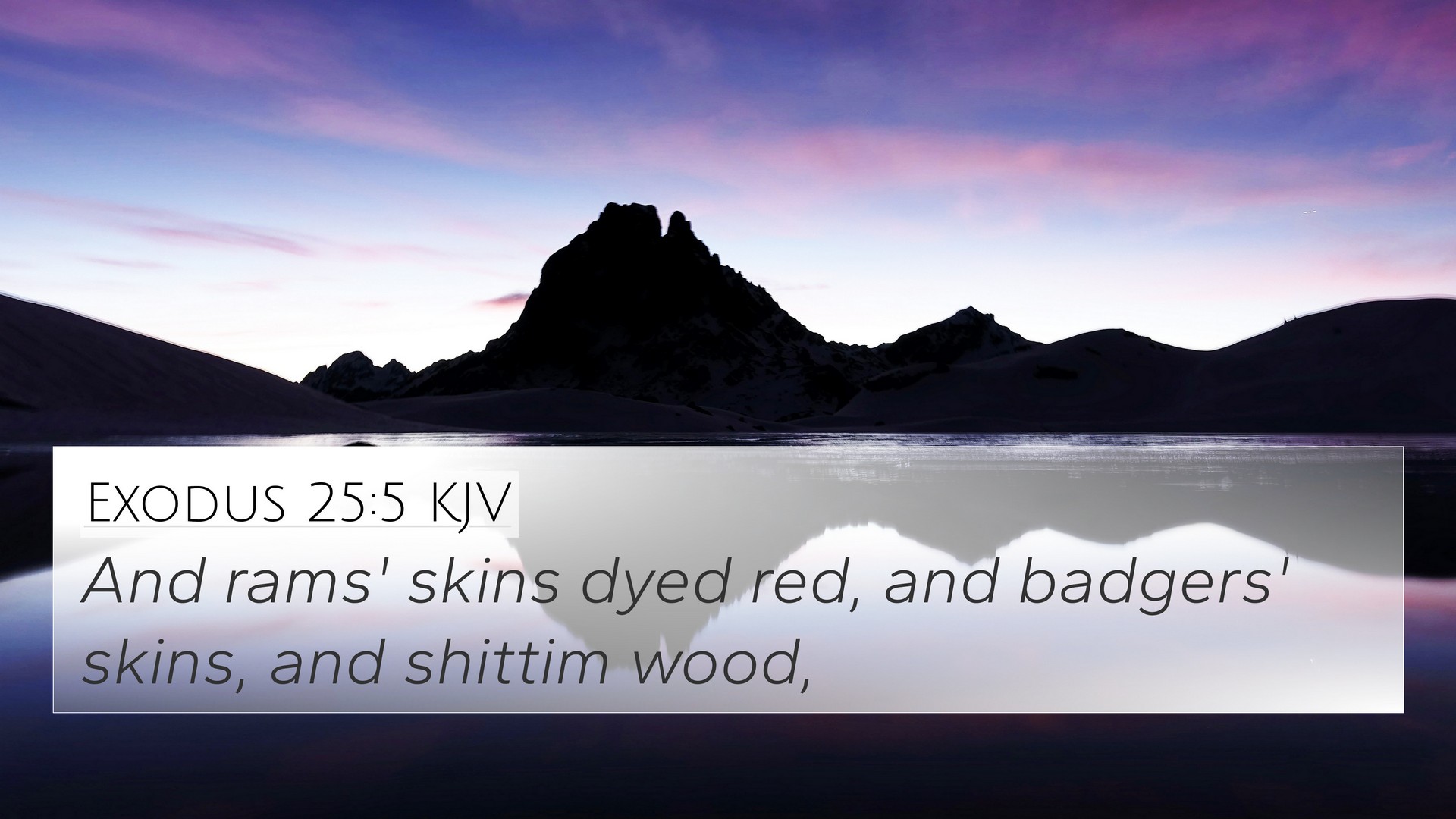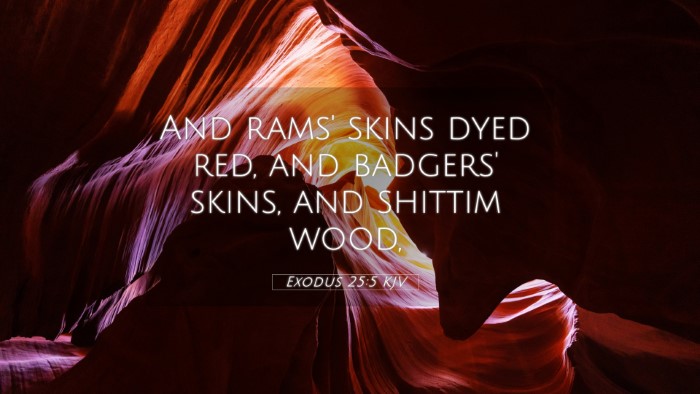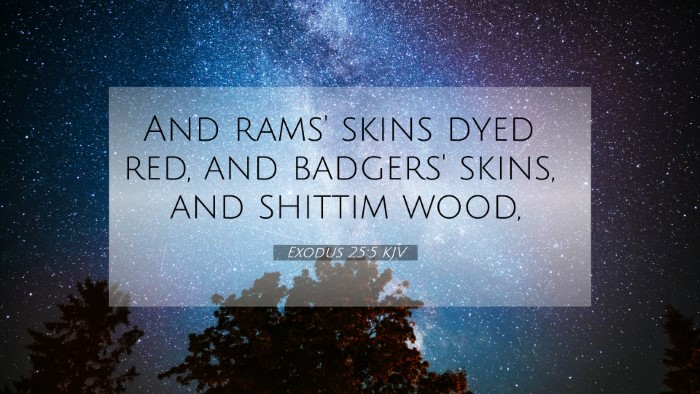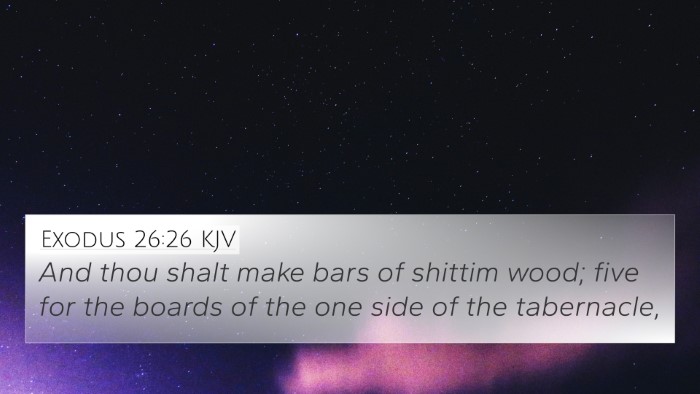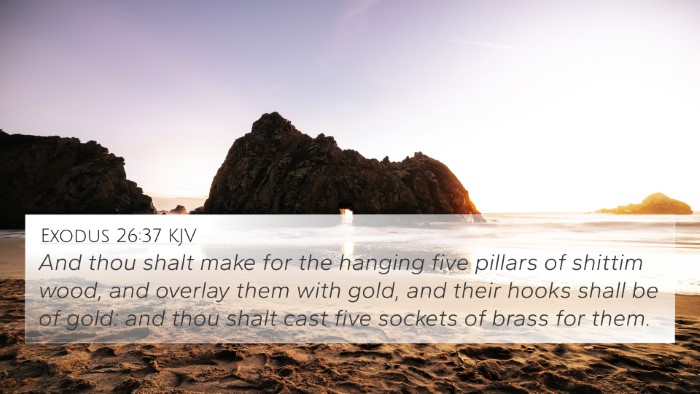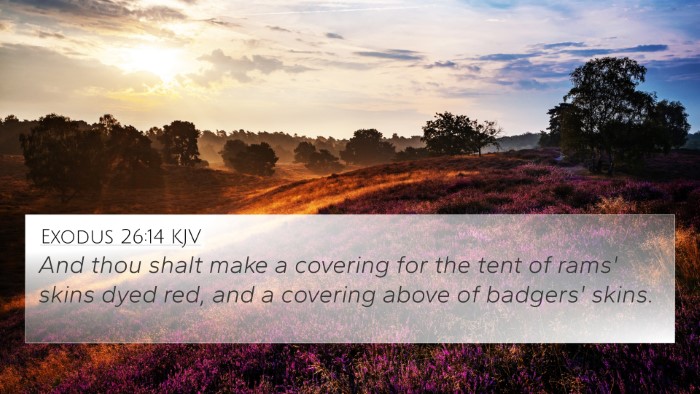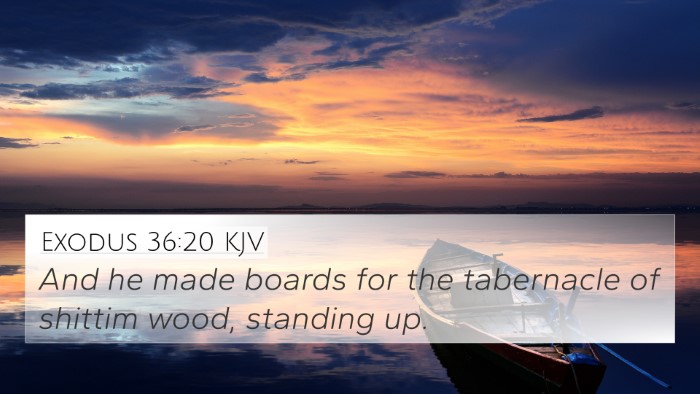Understanding Exodus 25:5
Exodus 25:5 states: "And ram skins dyed red, and badger skins, and shittim wood." This verse is essential in understanding the components that God instructed Moses to use for the Tabernacle's construction. The detailed specifications signify God's desire for holiness and perfection in His dwelling place among His people.
Insights from Public Domain Commentaries
This verse provides profound glimpses into the nature of God's instructions, showcasing not only the materials chosen but their symbolic meanings as interpreted by various commentaries.
- Matthew Henry:
This noted commentator underlines the importance of these materials in representing the beauty and sanctity of the divine abode. The red ram skins can represent the shedding of blood, indicative of redemption, while the badger skins are seen as a protection against the elements—symbolic of Christ’s covering for believers.
- Albert Barnes:
Barnes adds that the choice of “shittim wood” (often identified as acacia) symbolizes durability and incorruption. This reflects God's eternal covenant with His people, as the wood is not only sturdy but also resistant to decay, representing everlasting life through the grace of God.
- Adam Clarke:
Clarke emphasizes the necessity of these materials as prescribed by God. He notes the significance of each item as not merely practical but as spiritually instructive, pointing to the relationship between God and His creation and illustrating God’s attention to detail in establishing sacred spaces.
Bible Verse Cross-References
Exodus 25:5 connects with several other Bible verses that resonate with its themes and teachings. Here are some pertinent cross-references:
- Hebrews 9:2: Discusses the layout of the Tabernacle, tying in the overarching context of its divine significance.
- Exodus 26:1: Provides more details about the coverings of the Tabernacle, enhancing understanding of its construction.
- Leviticus 16:23-24: Illustrates the sacrificial system, highlighting the concept of atonement symbolized by the materials used.
- 1 Peter 1:18-19: Refers to the blood of Christ and redemption, echoing the theme represented by the ram skins.
- Acts 7:44: Reference to the Tabernacle in the wilderness emphasizes its importance in Israel's history.
- Revelation 21:3: Envisions God dwelling among His people, completing the thematic thread began in Exodus.
- Isaiah 40:2: Talks about the comfort and forgiveness of God's people, aligning with the purpose of the Tabernacle as a place of atonement.
- John 1:14: Refers to the Word becoming flesh and dwelling among us, contrasting the temporary Tabernacle with Christ's eternal presence.
- Matthew 1:23: Prophecy about Emmanuel (“God with us”) signifies the ultimate fulfillment of God dwelling with humanity.
- Hebrews 8:5: Speaks of the earthly tabernacle, affirming its divine design and purpose.
Thematic Connections and Practical Applications
The themes found in Exodus 25:5—sacredness, sacrifice, and God's dwelling—carry significant weight in both historical and contemporary contexts. Understanding the specific materials can lead to a deeper appreciation of how God desires relationship with His people, offering insights into His holiness and provision.
Tools for Bible Cross-Referencing
To explore these connections further, consider utilizing various tools for Bible cross-referencing, such as:
- Bible Concordance: Helps to locate words and themes across the Bible.
- Bible Cross-Reference Guide: A comprehensive tool providing thematic links between scriptures.
- Cross-Reference Bible Study: Methodologies focused on drawing parallels across biblical texts.
- Bible Reference Resources: Various resources available that aid in linking scriptures.
Conclusion
Exodus 25:5 serves as a critical junction in understanding God's intentions for the Tabernacle and, more broadly, His relationship with humanity. Reflecting on this verse through cross-references illuminates the connections between scripture, enhancing our understanding of Biblical themes. Grasping these connections can lead to a richer faith experience and a deeper comprehension of the Christian doctrine of redemption.
